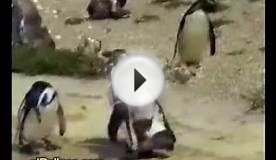Evidence of anthropogenic global warming
 Fossilised and live coral offer vital information on the effect of climate change on organisms.
Fossilised and live coral offer vital information on the effect of climate change on organisms.
(Phys.org) —A report from a panel of global scientists has offered the strongest evidence yet that climate change is a direct result of human behaviour.
More than 600 scientists worldwide contributed to the Fifth Assessment Report published last month by the Intergovernmental Panel on Climate Change (IPCC), which comes under the auspices of the United Nations.
The panel will further report on the biological consequences of global temperature rise, change in weather patterns and the rising temperature of oceans early next year.
Museum climate change research group
Scientists throughout the Museum continue to research the effects of climate change on the natural world in projects involving specimens as wide ranging as orchids, corals, salmon and trout, fossil shark teeth, seaweed, midges and butterflies.
In addition, an informal group of Museum scientists meet regularly to discuss climate change in general and to identify samples and specimens stored in the Museum collection that could be valuable to future climate change research.
Museum invertebrates researcher Dr Kenneth Johnson, who specialises in corals, said that even though we can't physically measure the past climate, specimens such as fossils and shells act as proxies, or representatives of a time and place.
Data trapped by shells
'Shells contain elements trapped within them that can be extracted and used as indicators as to what was happening at a certain time in our past.
'When we then compare that information with modern specimens, it shows us, for example, that as the seawater temperature increases, so do levels of magnesium.
Giant clams act like sections of tree trunk by holding information on seasonal changes in their shells.'We have a 50-year-old giant clam that, rather like the rings of a tree trunk, is particularly good at revealing seasonality and how things responded to climate change.'
Museum botanist Dr Mark Spencer, who specialises in orchids, said that because most scientific research focuses on the physics of climate change, it's vital to work further on understanding its affect on biodiversity.
'There are big gaps in our knowledge, which impacts on vital issues such as food security, sustainability of ecosystems in terms of human wellbeing and biodiversity, ' he said.
Another important aspect of the Museum collection is that new techniques are now available to study specimens.
'It's often the bits that have been left behind in drawers and not out on display that are the most interesting, ' Dr Johnson said. 'Because they weren't rare when they were found, they weren't considered interesting.


|
Can Mankind survive the consequences of Global Warming due to the shortening of the distance between the Earth and the Sun?The Catastrophic Aftermath of the Mars/Earth Collision 10 000 Years Ago. eBooks (Elsar (Amos) Orkan MD) |